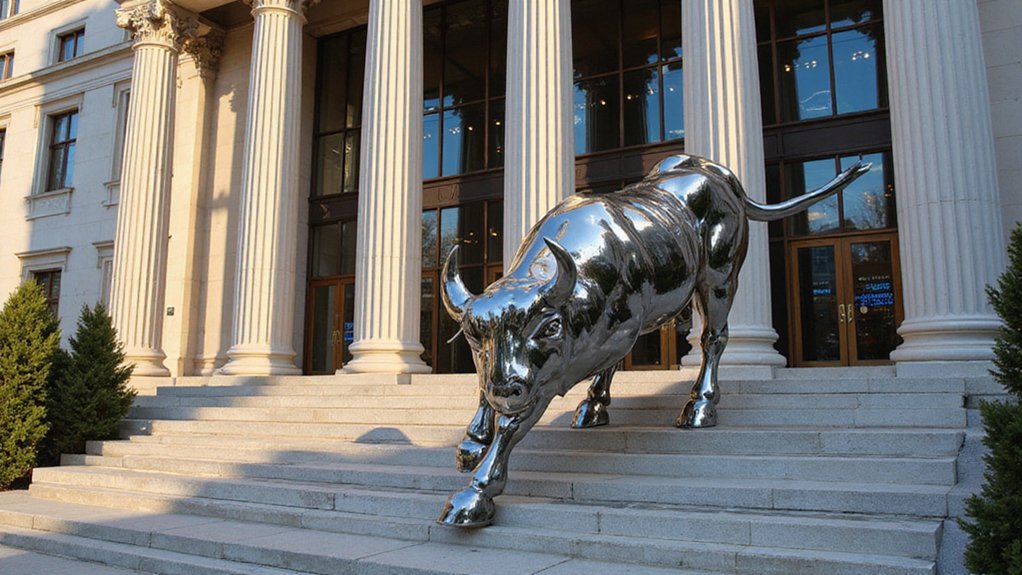While the GENIUS Act promises to bring order to the chaotic world of stablecoin regulation, critics argue that its carefully constructed framework contains enough loopholes to drive a $6.6 trillion exodus through—a figure that would make even seasoned financial regulators pause their morning coffee mid-sip.
The Act’s regulatory architecture appears robust on paper, mandating 1:1 reserve backing with low-risk assets like U.S. Treasuries and restricting issuance to approved entities including banks, credit unions, and federally chartered nonbanks.
The GENIUS Act’s seemingly bulletproof regulatory framework masks potential vulnerabilities that could undermine its ambitious oversight objectives.
Yet beneath this veneer of thorough oversight lurk several concerning escape hatches that savvy operators might exploit with characteristic ingenuity.
Perhaps most problematic are the “limited exceptions” permitting the Treasury Secretary to authorize non-U.S. regulated issuers during emergencies or at low transaction volumes. What constitutes an emergency, and how low is “low volume”? These definitional ambiguities could enable regulatory arbitrage on an unprecedented scale, allowing offshore operators to maintain market presence while skirting meaningful compliance.
The conditional approval process presents another avenue for creative interpretation. State-chartered issuers can operate temporarily while federal approval remains pending—a potentially indefinite limbo that could accommodate significant market activity without full regulatory oversight. Issuers below the $10 billion threshold may choose state-level regulatory frameworks that merely resemble federal requirements rather than mirror them precisely.
Banking executives are reportedly scrutinizing these provisions with the intensity typically reserved for derivatives documentation.
Market participants estimate that compliance costs and operational restrictions could trigger massive capital flight, with over $6.6 trillion potentially migrating to more accommodating jurisdictions. This forced exodus would likely fragment global stablecoin markets, creating liquidity stresses that ripple through interconnected financial systems. Emerging blockchain platforms like the Kaanch Network are positioning themselves to capitalize on this potential regulatory-driven migration with promises of near-zero fees and multi-chain interoperability.
The three-year timeline for delisting unauthorized stablecoins adds urgency to these concerns, potentially accelerating pre-emptive exits as issuers seek regulatory certainty elsewhere. The Treasury Secretary gains the authority to publicly designate noncompliant foreign issuers, effectively cutting them off from U.S. digital asset service providers.
Banks face a particularly delicate balancing act: embrace the new regulatory clarity while managing potential disruptions from mass stablecoin relocations.
Meanwhile, the prohibition on rehypothecation “except for liquidity purposes” begs the question of how broadly “liquidity” might be interpreted. If recent financial innovation has taught us anything, it’s that creative minds can transform seemingly narrow exceptions into expansive business models.
The GENIUS Act may indeed bring order to stablecoin markets, but whether that order resembles thoughtful regulation or strategic migration remains an open question.








